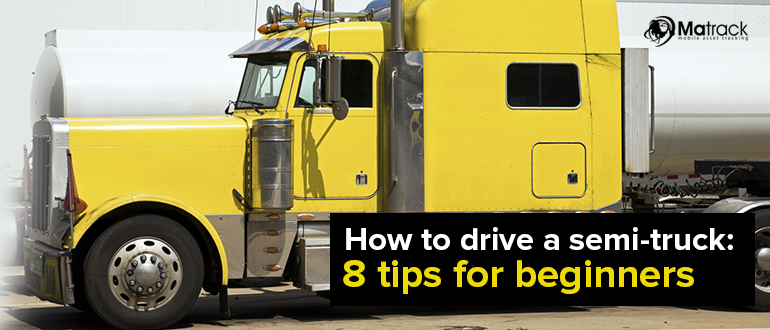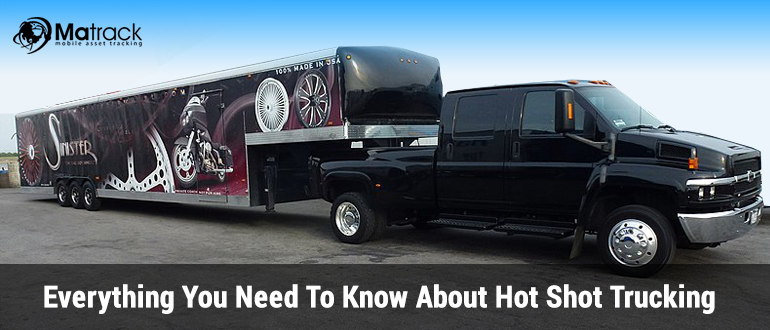Key Takeaways:
- Starting a transportation company requires choosing a clear service niche and understanding legal, operational, and market dynamics.
- Success depends on building a compliant, well-maintained fleet and hiring trained drivers who align with safety and service standards.
- Technology like fleet management software, dispatch tools, and real-time tracking improves daily operations and customer satisfaction.
- Matrack’s ELD device simplifies compliance, driver monitoring, and reporting, making it a practical investment for any transport business.
What Is A Transportation Company?
A transportation company is a business that provides the service of moving people or goods from one place to another using various types of vehicles. These companies operate within specific routes or regions based on the type of transportation they offer, such as freight, passenger, or delivery services.
Most transportation companies manage logistics, route planning, vehicle maintenance, and customer coordination. Their value depends on how reliably and efficiently they can complete each trip, whether it involves cargo or commuters.
Things You Need To Consider Before Starting Transportation Company
Industry Entry Barriers
Transportation is a capital-heavy, compliance-bound industry. You must assess whether you have the financial and operational tolerance to enter a regulated and competitive market.
Service Reliability Expectations
Customers expect punctual, safe, and consistent transportation services. Failing to meet these expectations results in immediate loss of trust and market share.
Regulatory Complexity
Transport operations involve overlapping local, state, and national regulations. You must be prepared to manage evolving compliance, vehicle standards, and permit requirements.
Competitive Density
Urban and metro regions often have high competition from aggregators, local fleets, and subsidized public transport. Entering such markets requires a clearly differentiated service offering.
Revenue Volatility
Transportation revenue fluctuates based on season, fuel prices, and route demand. You must consider whether your business model can survive lean months or sudden price hikes.
Driver Dependency
Your service quality depends heavily on driver behavior, professionalism, and availability. High attrition and skill gaps can weaken operations and increase costs.
Operational Complexity
Running a transportation company involves coordinating multiple moving parts, fleet, routes, drivers, traffic, and customer complaints, all in real time. This complexity demands strong systems and disciplined execution.
Geographic Limitations
Some areas have infrastructure gaps, traffic bottlenecks, or regional permit restrictions. You must assess whether your intended service area supports scalable and consistent operations.
Environmental Responsibility
Growing expectations around sustainability now affect transport branding and regulation. If your fleet contributes to emissions or road congestion, it may face criticism or policy pressure.
Liability and Risk Exposure
Transportation businesses carry high risk in the event of accidents, thefts, delays, or loss of goods. Consider if your company can afford legal liabilities or insurance burdens in high-risk scenarios.
How To Start Your Own Transportation Company?
1. Choose Your Niche
Start by deciding whether your company will focus on transporting goods, passengers, or offering specialized services like medical or school transport. Your choice should align with your resources, interests, and long-term business vision.
Different transportation types demand different equipment, staffing, and licensing. Knowing this early helps you avoid costly restructuring later.
Study the demand in your area and identify service gaps you can fill. This ensures your business enters the market with clear purpose and demand alignment.
2. Understand the Legal Requirements
Register your business based on your chosen structure such as sole proprietorship, partnership, or private limited company. The legal form impacts taxes, liability, and future funding possibilities.
Research the permits required by your local transport authority. These typically vary based on vehicle type, cargo, passenger, and payload capacity.
You will also need insurance coverage for your vehicles, passengers, and third-party liabilities. This protects your business from unexpected legal and financial risks.
3. Create a Business Plan
A well-written business plan defines your goals, strategy, and projected financials. It helps guide your decisions and attract investors if funding is needed.
Your plan should include startup costs, operational expenses, pricing strategy, and growth forecast. Make sure your numbers are realistic and based on research.
Include a clear description of your service offering and competitive edge. This shows that you understand your market and know how to compete effectively.
4. Secure Funding
Estimate the total capital needed for vehicles, permits, marketing, and staff salaries. Your startup budget should also include working capital for the first six months.
Explore funding options like personal savings, bank loans, government grants, or private investors. Choose sources that align with your repayment ability and risk profile.
Prepare a solid pitch and financial forecast to convince lenders or partners. Clear financial planning builds trust and improves your chances of getting approved.
5. Build Your Fleet
Decide if you will buy, lease, or partner for vehicles based on your budget and usage needs. Each option carries different long-term financial implications.
Choose vehicle types suited to your service, cargo vans for deliveries, sedans for executive rides, or mini-buses for group transport. Match vehicle size to expected trip volume and route distance.
Create a vehicle maintenance schedule to reduce breakdowns and ensure road safety. A healthy fleet keeps your operations smooth and your customers satisfied.
6. Hire Qualified Drivers
Look for drivers who hold valid commercial licenses and have clean driving records. Their skill and professionalism directly affect your company’s reputation.
Train them on your company’s routes, safety standards, and customer service protocols. Even experienced drivers benefit from role-specific onboarding.
Implement a performance monitoring system to track punctuality, fuel usage, and customer feedback. This helps maintain consistent service quality across your fleet.
7. Set Up Operations
Develop a dispatch system to manage trip scheduling, route assignment, and real-time GPS tracking. Digital tools simplify coordination between drivers and customers.
Set clear procedures for vehicle check-ins, issue reporting, and customer complaints. These operational workflows minimize delays and service disruptions.
Assign staff for customer support, billing, and administrative tasks. Each role contributes to the daily flow of operations and must be clearly defined.
8. Use Technology
Invest in fleet management software that tracks vehicle location, fuel use, and service history. Automation reduces human error and increases visibility.
Enable a booking system via mobile app or website to make your service accessible. Digital platforms improve customer convenience and expand your reach.
Use analytics to monitor trends in usage, delays, and cancellations. Data-backed decisions help you optimize routes and improve performance over time.
9. Promote Your Business
Create a recognizable brand name, logo, and visual identity that reflect your service values. Consistency across vehicles, uniforms, and online platforms builds trust.
Use digital channels like social media, local SEO, and Google Ads to reach your audience. Targeted marketing ensures your message hits the right customers.
Offer launch promotions or referral programs to drive initial traction. Word-of-mouth and incentives can quickly scale your customer base.
10. Monitor and Improve
Track daily performance through KPIs like trip volume, cancellation rate, and customer satisfaction scores. These numbers reveal what’s working and what needs attention.
Request feedback after each service to learn directly from your users. Use this input to refine training, service timing, or route planning.
Review financial and operational reports monthly. Consistent monitoring helps you adapt quickly and maintain sustainable growth.
Why Matrack ELD Device Is Must For Your Transportation Business?
Matrack’s ELD device helps transportation businesses stay compliant with FMCSA regulations while streamlining daily fleet operations. It records hours of service, driving time, location, and mileage automatically, which reduces the chance of violations and audit issues.
The device installs easily within minutes and supports all types of commercial vehicles including light trucks, buses, and heavy-duty fleets. Fleet managers can track vehicle locations in real time and review driver logs and inspection reports through a central dashboard.
It also simplifies IFTA reporting and digital vehicle inspections, allowing faster processing of fuel tax data and safety checks. With flexible month-to-month pricing starting at $19.95, Matrack gives transportation companies a reliable and cost-efficient way to manage compliance.



